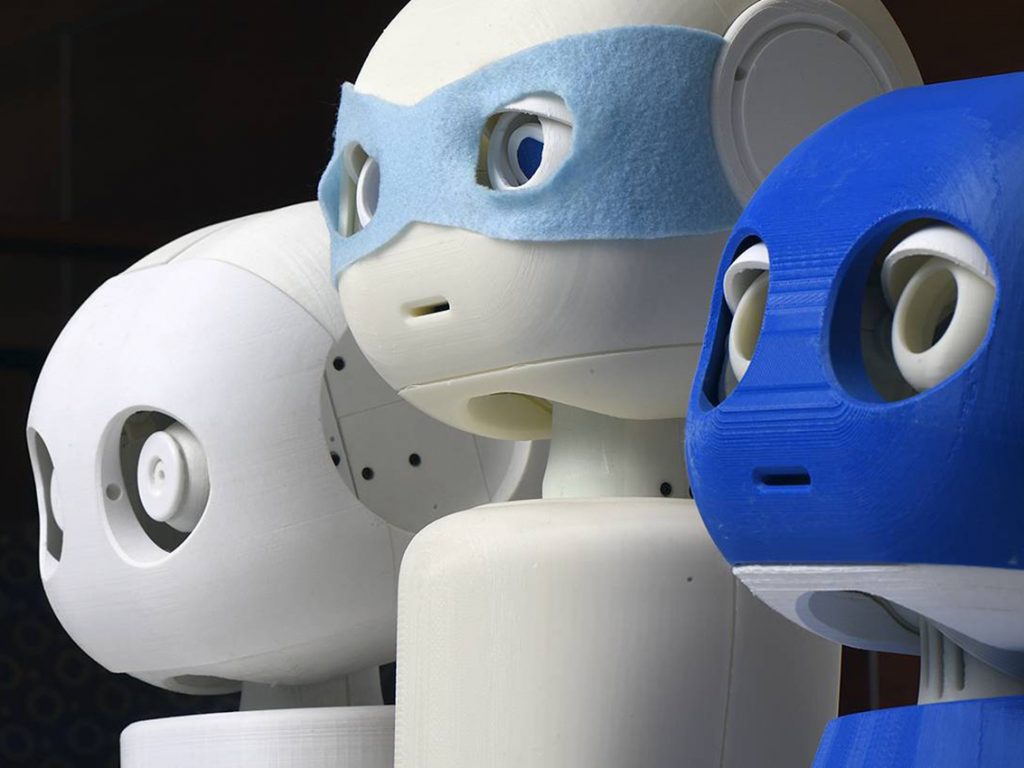n the Malone Hall lab of computer science Assistant Professor Chien-Ming Huang, three armless and legless—cute, but somewhat creepy—18-inch-tall robots rest atop a shelf. They come down now and again so that Huang and his students can tinker with their ability to blink, rotate their plastic heads, nod, respond to human touch, and even make eye contact. Well, sort of. It’s actually the illusion of eye contact. These robots are programmed to recognize and follow a human’s face by using a camera. They’re also outfitted with tactile haptic sensors to recognize, say, a poke or a hug, and react accordingly.
Still, this robot squad can’t do much, yet. Besides being physically limited without appendages, they’re also mute and many elements of their programming are works in progress. One sports a blue mask; let’s call him Bandit. Another wears a gray cloth pelt with slits for his big expressive eyes, like Gizmo from Gremlins. The third is shaped like a squat Pez dispenser and will have a permanent—and purposeful—grin. These robots are meant to make people happy.
One day, a year or two from now, a future iteration of Bandit, Gizmo, or Pez will likely join the health care workforce. Huang and a team of engineering students are designing social companion robots to spend quality time with pediatric patients—either bedside or in an activity room—to comfort them, not unlike a hospital’s child-life specialists or therapy animals. Ideally, the interactive robot would bring some joy to the child, perhaps just a smile, and distract the patient from the anxiety of being in a foreign and sometimes scary place.
But there’s a long row to hoe before these prototypes can be deployed in a clinical setting. Every tiny detail of the robot needs to be scrutinized, from its physical appearance, to its movements, to how people will communicate and interact with it. Just consider eye movements. They need to be believable, even random at times, like how a person might look down at his shoes without provocation. “We need to make people believe the robot has situational awareness. That it has agency,” says Huang, sitting in a lab filled with robotic parts, including a robot arm and various circuit boards. “There are a lot of design considerations. How do you make it approachable? How to make it friendly? Relatable?”
